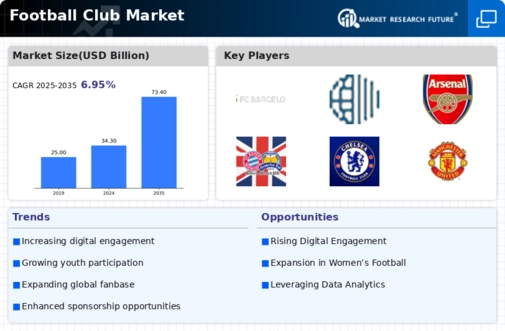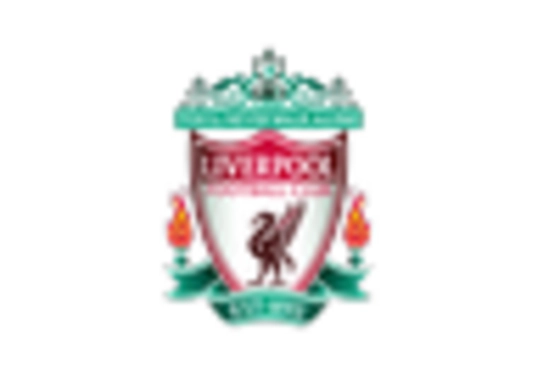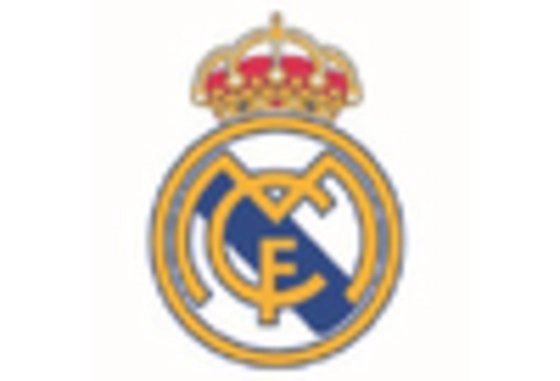Diverse Revenue Streams
The Football Club Market is increasingly characterized by the diversification of revenue streams. Traditionally reliant on ticket sales and broadcasting rights, clubs are now exploring various avenues to enhance their financial stability. Sponsorship deals, merchandise sales, and digital content monetization are becoming essential components of club revenue. For instance, clubs are forming strategic partnerships with brands to create co-branded merchandise, which can significantly boost sales. Additionally, the rise of e-sports and fantasy football leagues presents new opportunities for clubs to engage with fans and generate income. According to recent estimates, clubs that successfully diversify their revenue sources can increase their overall income by up to 30 percent. This trend indicates a shift in how clubs operate within the Football Club Market, emphasizing the need for innovative business models.
Technological Advancements
Technological innovations play a pivotal role in shaping the Football Club Market. The integration of advanced analytics, virtual reality, and augmented reality into training and fan engagement strategies is becoming increasingly prevalent. Clubs are utilizing data analytics to enhance player performance and optimize game strategies, which may lead to improved outcomes on the field. Moreover, the use of virtual reality in fan experiences, such as virtual stadium tours and interactive match experiences, is gaining traction. This not only enhances fan engagement but also opens new revenue streams through digital content. The market for sports technology is projected to grow significantly, with investments in this sector expected to reach billions in the coming years. Consequently, clubs that embrace these technological advancements may gain a competitive edge in the Football Club Market.
Youth Development Programs
Youth development programs are increasingly recognized as a cornerstone of the Football Club Market. Clubs are investing in academies to nurture young talent, which not only strengthens their squads but also provides a potential revenue source through player transfers. The success of youth academies can be seen in clubs like FC Barcelona and Ajax, which have produced world-class players who have gone on to command high transfer fees. This focus on youth development is not merely a strategy for on-field success; it also enhances a club's brand and community engagement. By fostering local talent, clubs can build a loyal fan base and create a positive image within their communities. As such, the emphasis on youth development is likely to continue shaping the Football Club Market in the years to come.
Increased Global Investment
The Football Club Market is witnessing a surge in global investment, with wealthy individuals and consortiums seeking ownership stakes in clubs. This trend is driven by the lucrative nature of football as a business, with clubs increasingly viewed as valuable assets. Recent data indicates that the average valuation of top-tier clubs has risen significantly, with some clubs now valued at over a billion dollars. This influx of capital allows clubs to invest in infrastructure, player acquisitions, and marketing initiatives, thereby enhancing their competitive position. Furthermore, the presence of foreign investors often leads to increased international exposure and fan engagement, as these investors leverage their networks to promote clubs on a global scale. Consequently, the trend of increased The Football Club Industry.
Rising Popularity of Football
The Football Club Market experiences a notable surge in popularity, particularly among younger demographics. This trend is evidenced by increasing viewership numbers, with major leagues reporting a rise in television ratings and online streaming subscriptions. For instance, the English Premier League has seen a 20 percent increase in international viewership over the past few years. This growing interest translates into higher merchandise sales and ticket revenues, thereby enhancing the financial viability of clubs. Furthermore, the proliferation of social media platforms allows clubs to engage with fans more effectively, fostering a sense of community and loyalty. As a result, clubs are likely to invest more in marketing strategies to capitalize on this trend, which could further drive growth in the Football Club Market.

















Leave a Comment